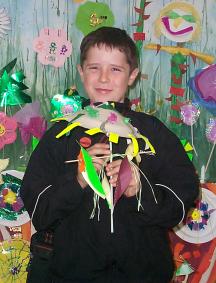
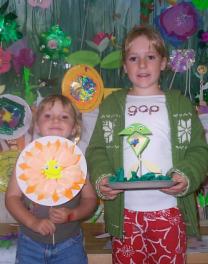
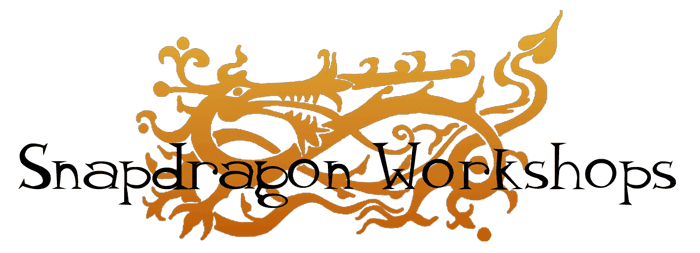 Education - Inspiration - Enjoyment
Education - Inspiration - Enjoyment
...plant the seeds and watch them grow...
The Evolution of Flowers - Past, Present and Future!
This was four days of drop-in art-meets-science workshops held at The Eden Project looking
at the evolution of flowers over hundreds of millions of years - and how flowers are
adapting to changing conditions today and will be facing evolutionary pressures in the future.
As well as delivering creative environmental sciences sessions, SnapdragonWorkshops
provided an extensive exhibition of posters, pictures, text, specimens, music and
display paraphenalia to provide an environment where visitors to The Eden Project could have
the opportunity to learn about the evolution of flowers and consider how they might evolve in
the future in response to their currently changing environment.
We hoped to impress upon visitors
that: The plant world we see around us today is merely a snapshot in time and not the “norm”;
Plants have been evolving for the last two billion years to bring us to this point in time
when the flowering plants are the dominant global vegetation; Our floral landscape is still evolving
today in response to various pressures; and our native wildflowers are increasingly threatened
by several environmental concerns. By suggesting that visitors focus on designing a plant for the
future as the main activity for the sessions, we hoped to assist them in exploring these ideas.
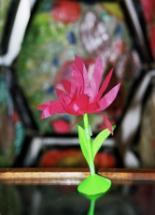



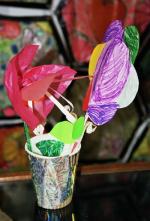
The posters and information sheets that we made beforehand discussed the concepts of geological time,
the processes of fossilisation, the evolution of plants in general and the evolution of flowering plants in particular,
the co-evolution of plant and animal species in mutually beneficial symbiosis,
the evolution of carnivourous flowering plants, flower anatomy and reproduction,
the state of our native wildflower populations today, the challenges they face
in the future and what we can do to help our indigenous wildflower species survive, plus
designing flowers for the future.
All the above subjects are extremely relevant to the National Curriculum for key stages one,
two, three, four and five and are particularly relevant to art and science.
We provided:
Art materials - Paper, pens, pencils, scissors, string, cardboard, rulers, sharpeners etc
Fossils - Real fossil plant material to look at and handle.
Posters - The evolution of flowers (past, present and future) clearly explained through a series
of informative posters on the walls.
Reference books - Books and articles to flick through and read, for information and inspiration.
Handouts to take home - Activity sheets and information sheets covering a variety of themes.
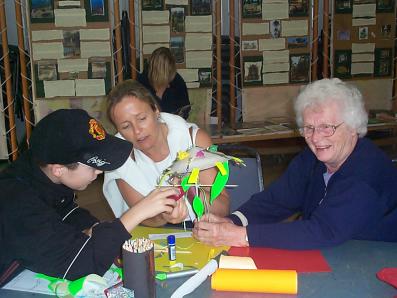

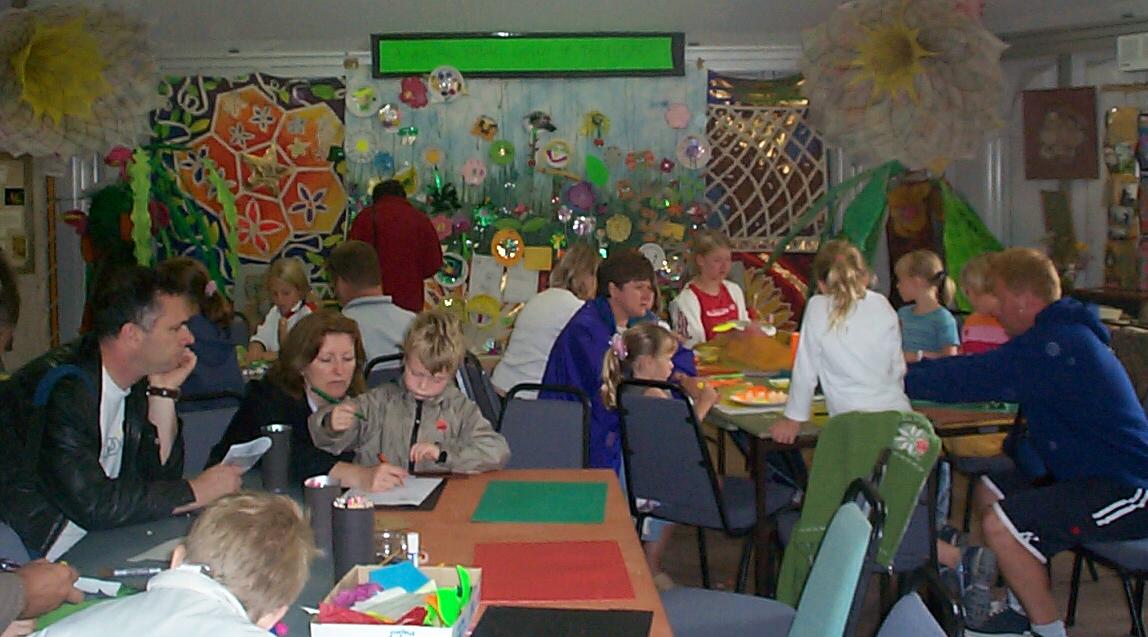
The following activities on offer provided visitors with different opportunities to
learn through creativity:
 Handling prehistory - a chance to look at some fossilised plant specimens close-up
including ferns, horsetails, ginkgoes, and cycads. Handling these specimens opens peoples'
eyes and makes the evolutionary history of the plant kingdom come alive in their hands and
gets them asking questions.
Handling prehistory - a chance to look at some fossilised plant specimens close-up
including ferns, horsetails, ginkgoes, and cycads. Handling these specimens opens peoples'
eyes and makes the evolutionary history of the plant kingdom come alive in their hands and
gets them asking questions.
Investigating Living Flowers - This was an area where visitors could stop and study
the structure of a variety of flowers in a vase (possibly for the first time!).
They could investigate the detailed anatomy of the flowers with the help of a handout called
"Whats in a Flower?". Is it male? Is it female? Is it both! What are all the little bits in
the middle called?.... Just look at them (with the help of magnifying glasses) or draw them,
or discuss what you see.
Designing Flowers for the Future - With the help of a handout, visitors could design and
make
a flower for the future, either in 2D or 3D using paper engineering and plenty of imagination,
recycling a variety of materials in the process.
Creative Collage - This was a large piece of canvas on the wall on which visitors could
stick their "flower of the future" designs with their design sheets and explanatory notes. These communicated their thoughts on how flowers
will need to adapt to survive in the future and left us with dynamic and thought-provoking
pieces of artwork. By the end of the workshop we had a beautiful botanic garden of the future.
Paper plant pots - How to make a plant pot for your flowers by recycling old newspaper.
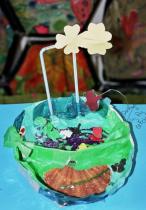
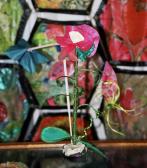


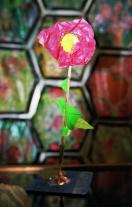



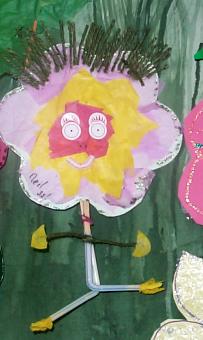

Snapdragon Workshops provided all the materials for these activities (coloured paper, card, tissue paper, pens,
pencils, crayons, charcoal, ribbon, wool and string), and also provided handouts and worksheets on relevant themes.
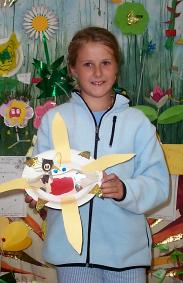
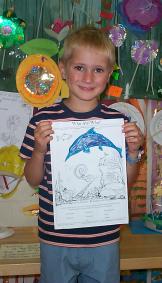
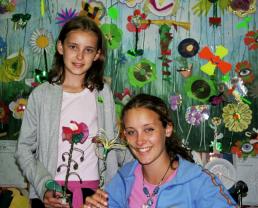

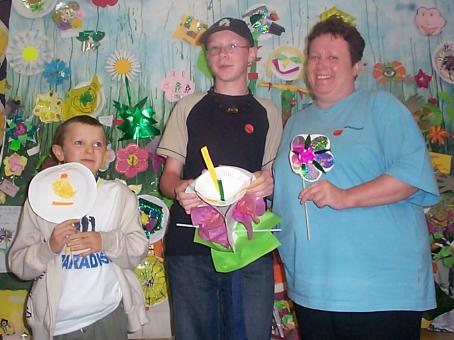
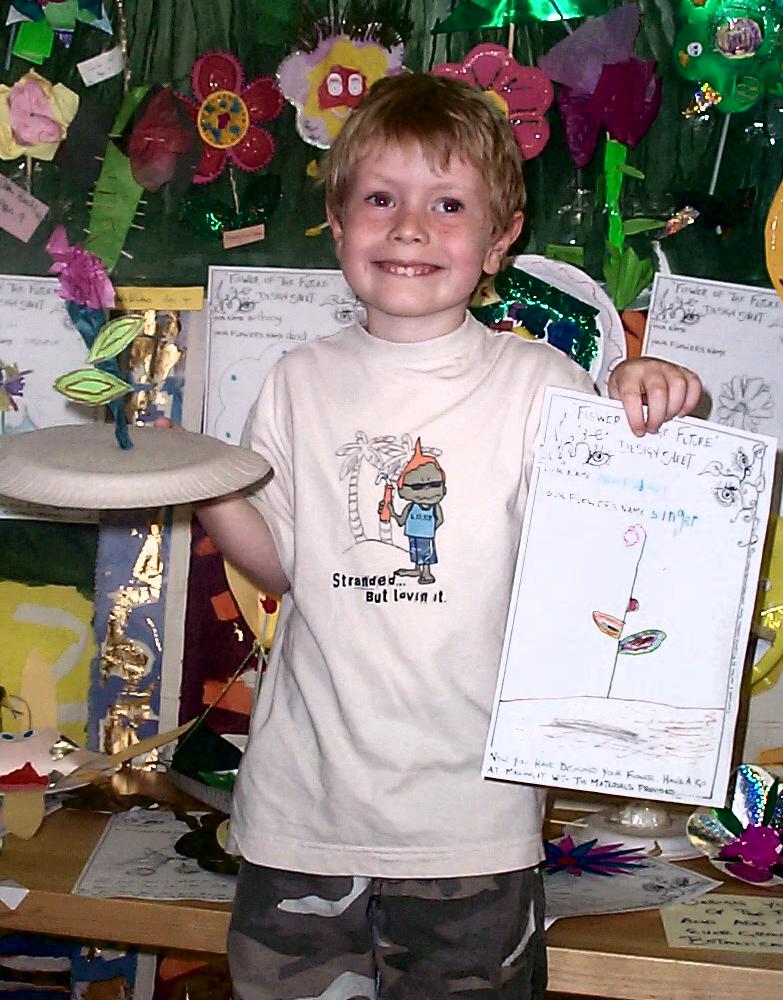
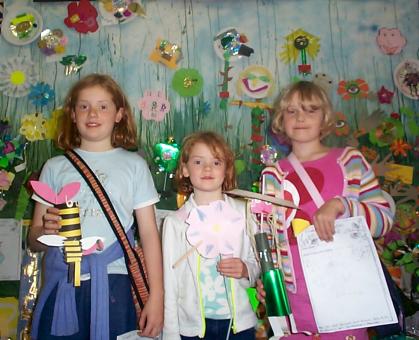


With thanks to:
Lydia, Helen, Tom, Liam, Patricia, Jackie, Joe, Thomas, Kath, Emily, Alice, Rosanna, Laura, Lucy, Georgina, Paul, Holly, April, and Josie.
The information laid out in the display provided access to information for most learning styles. We always try our best to include
everybody by using a wide range of equipment, information and specimens that stimulate as many of the senses as possible.
We aimed to provide a fun, friendly, and relaxed atmosphere where people could explore the themes under discussion through
creative processes and talking. Risk assessments were of course undertaken for all of the activities provided.
Some of our photos of Eden from this visit:
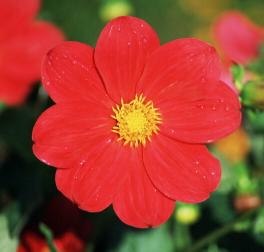



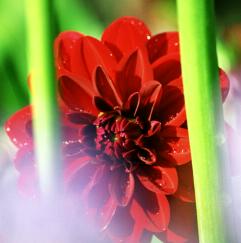

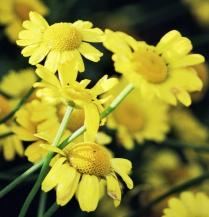
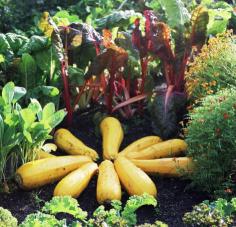
back to the top of the page
Snapdragonworkshops Home Page



 Education - Inspiration - Enjoyment
Education - Inspiration - Enjoyment 

































